White Spots On Skin: Causes, Treatments, And Prevention
The sudden occurrence of pale patches on the skin often has valid reasons and thankfully, treatments.
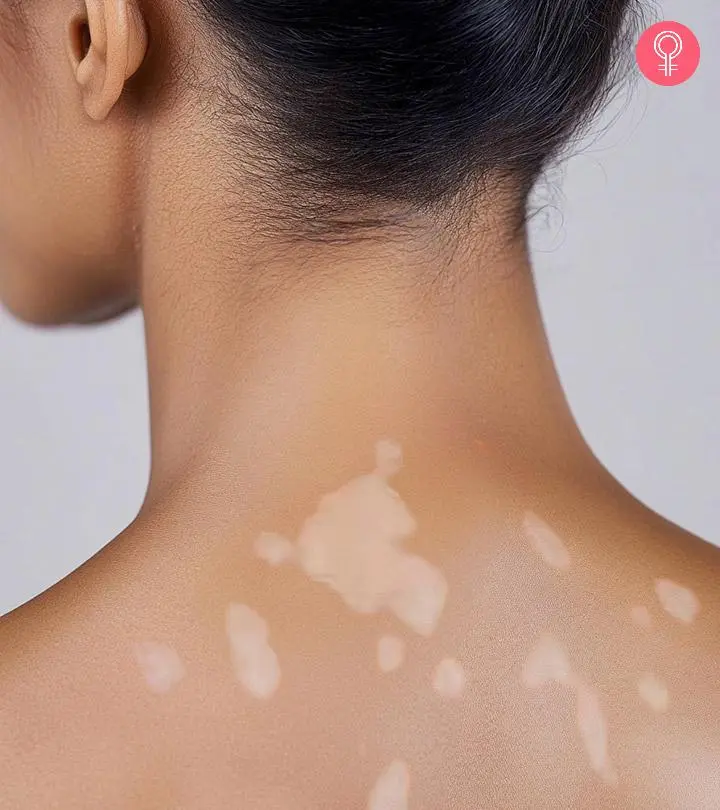
Image: Midjourney/ StyleCraze Design Team
White spots on the skin is a very common concern and can sometimes be a cause for worry.
Several factors may cause white spots on the skin. If you are here because you have recently noticed uneven skin pigmentation and don’t know the reason, we can help you. Understanding the causes helps you choose the right treatment method and identify when professional medical advice is necessary. An early diagnosis may also significantly improve the treatment outcomes.
This article explains the different forms of white spots you may notice on your skin, treatment options, and prevention tips. Scroll down to learn more about why you may have white spots on your skin!
In This Article
What Are White Spots?
White spots are patches of hypopigmented or depigmented skin present on the face or any other part of the body. These spots can appear in several forms ranging from a tiny cluster of dots to patches covering a larger surface. Though they typically are not a cause of concern, you should visit a dermatologist as and when the issue arises.
Various factors could cause white spots on your skin. Read the next section to find out what they are.
Key Takeaways
- Excess sun exposure is the primary cause of many skin conditions, and white spots are no exception.
- However, many other factors cause skin depigmentation (like eczema, tuberous sclerosis, etc.).
- While some of them are common, others are either rare or serious.
- The large white patches, if left untreated, may increase the risk of other serious skin issues.
What Causes White Spots On Your Skin?
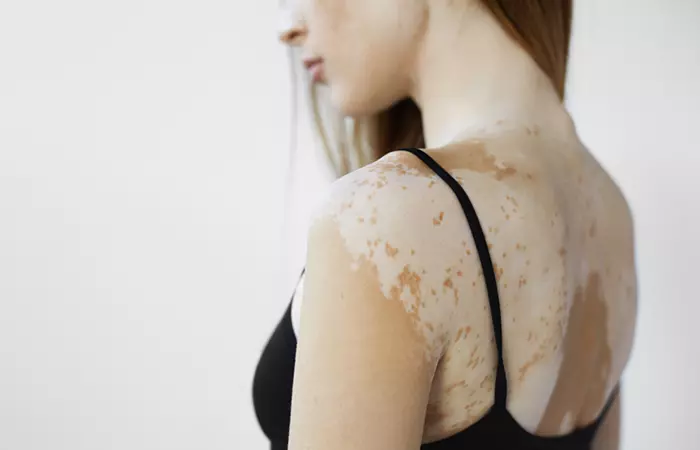
1. Genetic Factors
White spots on the skin can have various causes, including genetics. Hence, individuals need to be aware of their family history. Some conditions with white spots that may occur due to genetic factors include:

- Idiopathic Guttate Hypomelanosis Or Sunspots
Dr. Nadir Qazi, a board-certified cosmetic physician, says, “Idiopathic guttate hypomelanosis (IGH) is a benign skin condition that appears as white spots on elderly and fair-skinned individuals. It occurs when there is a disruption in the transfer of melanin from melanocytes to keratinocytes or skin cells. The causes are not fully known, though they are generally linked to aging, sun damage, and genetics. Sunlight is not good for it and can worsen the condition. Therefore, use a high-SPF sunscreen when venturing outdoors and reapply often.”
He adds, “The best treatments for idiopathic guttate hypomelanosis are in-office treatments that can control skin healing, like cryotherapy, chemical peels, and laser treatments.”
Sunspots are a cluster of white spots occurring on the skin due to excess sun exposure. These white spots typically occur on the legs before making an appearance on the arms, back, and the face. They are more prominent in light to olive-skinned women over the age of 40 (1). This condition generally runs in families and is hereditary.
White sunspots are usually harmless and are not a symptom of any disease.
- Vitiligo
This is an autoimmune skin condition that occurs when the body’s immune system attacks melanocytes (cells that produce skin color)
(3). One may observe large white spots on their hands, knees, and genitals. In certain cases, this issue may also affect the areas with mucous membranes, like the inside of one’s nose and mouth.
A 2025 survey on 4,888 participants showed that the prevalence of vitiligo in the US adult population was estimated to be between 0.76% and 1.11%. This means that approximately 0.76% to 1.11% of adults in the US, or roughly 1.9 million to 2.8 million individuals, were affected by vitiligo that year.
2. Tinea Versicolor
Tinea versicolor is a skin condition caused by the overgrowth of microscopic yeast (known as Malassezia) on one’s skin (2). While more research needs to be conducted, potential causes of tinea versicolor include:
- Oily skin
- A weak immune system
- Warm, humid conditions
- Excessive sweating
Teenagers and other individuals living in tropical climates are more susceptible to tinea versicolor. The white spots typically occur on the back, neck, and the trunk. They may also appear in shades of red, pink, and brown. These tiny white spots may increase in size over time. They are accompanied by:
- Dryness
- Scaling
- Itching
This condition tends to recur and generally resolves without any permanent skin discoloration.
 Trivia
Trivia3. Nutritional Deficiencies
The diet you follow may also affect skin health. While more studies are warranted, many believe that diets lacking vitamin D, vitamin E, and calcium may cause white spots on one’s face and body.
Rare Causes Of White Spots
1. Tuberous Sclerosis
This is also called the Bourneville disease. It causes white spots that are scattered all over the skin. Tuberous sclerosis affects people of all ages but is more commonly experienced by infants and children below the age of six (4).
But it could be a serious condition that also may cause tumors (non-cancerous) to grow in the brain, and on kidneys, heart, eyes, or skin. It can also be found as a part of the neurological conditions.
2. Lichen Sclerosis
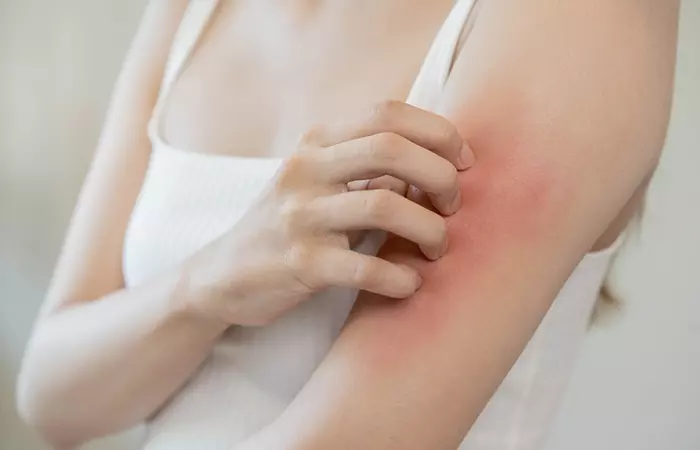
This is an extremely rare type of white spot disease and is typically experienced by people of every age group.
This problem appears in women in the form of white patches around the anus and vulva region (5). Men, on the other hand, may experience this issue on the foreskin of their penis. These patches can also be found on other parts of the body.
While mild cases may not showcase any other symptoms, moderate to severe cases may manifest as:
- Severe itching
- Burning sensation during urination
- Weak skin that tears or bruises easily
- Bleeding
- Blistering
- Painful intercourse
Visit a dermatologist immediately if you experience any of these symptoms.
3. Eczema
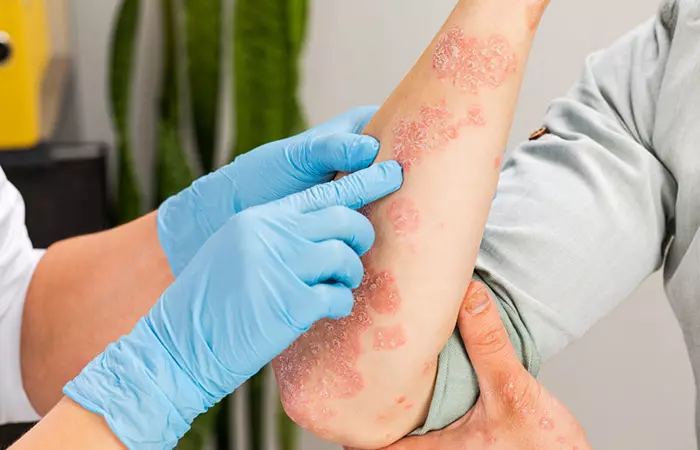
Eczema is a lifelong condition that typically begins before the age of five. Interestingly, people with secondary conditions like hay fever are more susceptible to it.
This disease is generally characterized by small red, itchy patches, and raised bumps (6). In certain cases, these symptoms may also be accompanied by white spots on the body.
The most commonly affected areas include:
- Scalp
- Eyelids
- Elbows
- Wrists
- Feet
- Hands
- Face
- The back of the knees
The rashes and white spots on the skin are mainly defined by their itchiness, especially at night. These areas, when scratched, can result in open, leaky sores. The affected areas can eventually become thick, dry, scaly, and difficult to remove if not treated immediately.
The white spot disease is often chronic and may develop time and again without any obvious pattern.
Serious Causes Of White Spots On Skin
In very rare cases, the appearance of white spots or white lumps may be a sign of skin cancer. A study published in the JAMA Dermatology journal found that shiny white structures, such as blotches and strands, were strongly associated with non-pigmented basal cell carcinoma. Non-pigmented basal cell carcinoma is a common type of skin cancer. This study examined skin under a dermoscopy ( a magnifying tool with light), highlighting a rare but possible link between white spots and skin cancer (7).
However, more research is warranted in this regard. Visit your dermatologist if the spots do not disappear after a few days.
Now that you know the different causes of white spots on the skin, let us look at the various symptoms that could accompany this issue.
Symptoms That Generally Accompany White Spots On Your Skin
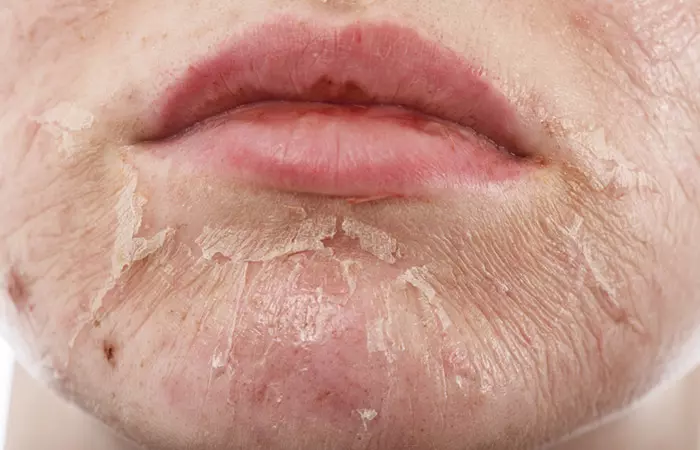
White spots on the body more often tend to indicate a larger underlying issue. The individual is likely to experience one or more of the following symptoms:
- A burning sensation
- Tenderness of the skin
- Allergic reactions (angry boils, red skin, itchy skin)
- A change in the feeling of the skin
- Dry skin around the affected area
- Peeling skin
- Increased body temperature around the area
- Swelling
While all the symptoms mentioned above warrant a doctor’s visit, the symptoms listed below require immediate medical attention as they may indicate an extreme health issue.
- An asthma attack (characterized by suffocation or difficulty breathing)
- Sudden or extreme swelling around the face, lips, and throat
Any medical issue may cause various health complications in the future if not treated in a timely and appropriate manner. The same could hold true for white spots too. Read the next segment to find out more.
What Complications Can White Skin Spots Cause?
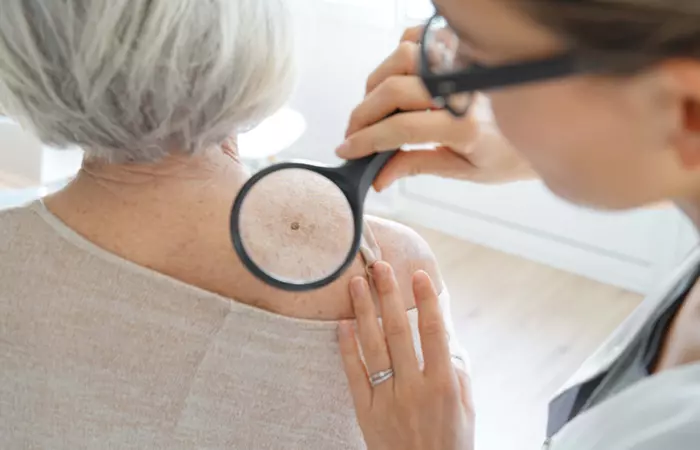
Tiny white spots by themselves are harmless and do not cause any long-term issues. However, you should monitor any changes in their size, color, or texture, as these may indicate underlying health issues. Treatment for autoimmune conditions like vitiligo is necessary to prevent the spread. We have discussed some potential complications of white spots below.
1. Skin Cancer
Untreated white pigment spots on the skin, especially depigmented patches like vitiligo, may increase the risk of skin cancer. Such white spots could signal a lack of melanin in the skin or hypopigmentation. Melanin protects the skin from the harmful rays of the sun (8). But do note that the probability of an individual with vitiligo developing skin cancer is quite low.
2. Autoimmune Disease
This is one of the more prominent complications that could occur in tandem with vitiligo (9). Generally speaking, vitiligo cannot cause an autoimmune disease. However, individuals with vitiligo could be at a higher risk of developing autoimmune diseases. These include:
- Rheumatoid arthritisi An inflammatory and autoimmune disease in which the immune system attacks its own tissues, especially joints in the hands and feet.
- Psoriasis
- Pernicious anemiai An autoimmune condition that causes red blood cells to drop due to the failure of the small intestine to absorb vitamin B12.
- Systemic lupus erythematosusi A chronic disease that causes inflammation in connective tissues due to an attack on healthy cells by the immune system.
- Autoimmune thyroid disease
- Type 1 diabetes
- Addison's diseasei A medical disorder that occurs when the adrenal glands fail to produce sufficient hormones under stress, causing weakness and fatigue.
3. Mental Health Issues
While the tiny round white spots on the skin can be ignored, large white patches (like those caused by vitiligo) are extremely noticeable.
Such spots present on uncovered areas like the face and forearms may hurt an individual’s self-confidence and self-esteem. This may also lead to mental health concerns like anxiety and depression.
While these complications are quite serious, they are relatively rare and can be prevented if treated on time. Let us look at the treatment options for white skin spots in the next section.
Treatment Options For White Spots On The Skin
If you have been wondering how to treat hyperpigmentation, we have listed the different treatment options available for the different types of white spots. Take a look.
1. Idiopathic Guttate Hypomelanosis Or Sunspots
The first step to treating such sunspots is limiting exposure. While this may cure the spots, it will prevent further damage.
Other treatment options include:
- Topical Creams
These are prescription creams that lighten the skin around the white sunspots. This enables the white spots to seamlessly blend into the skin. Other creams containing l-ascorbic acid (vitamin C), glycolic acids, corticosteroids, retinoids, and azelaic acid were found to help in the treatment of similar (brown) spots (8).
- Dermabrasion
Dermatologists may recommend dermabrasion in some cases to remove the white spots caused by sunburns. The process involves a diamond wheel or wired brush with rough edges that sands down the top layer of the skin (11). This is done to bruise the skin and initiate the healing process.
- IPL (Intense Pulsed Light) Treatment
This is a non-invasive procedure that uses high-intensity pulses of visible light to injure the skin’s dermis (12). It may trigger the production of new collagen and may result in an even complexion. However, more research is warranted in this regard.
- Laser Treatment
This procedure is similar to that of the IPL treatment. However, while IPL may use a combination of filters, the laser treatment uses a single wavelength of light. This treatment is currently available as ablative (targeting and removing the top skin layer) and non-ablative treatments (targeting and damaging deeper layers of the skin with heat) (13).
2. Tinea Versicolor
The white spots and other symptoms related to this skin issue tend to disappear on their own during winters. However, they may recur in the summers when the temperature is hot or humid.
You may prevent the occurrence of white spots on skin by using over-the-counter (OTC) anti-fungal products (14). These topical products effectively eliminate the white spots by reducing the amount of yeast present on the skin. The most commonly used products are:
- Ketoconazole
- Miconazole
- Clotrimazole
- Selenium sulfide
Do note that these drugs act slow and may show results only after months of continuous use. The fungal colonization decreases, but it may take a long time for color to come back. But consult your local dermatologist when you don’t find a difference even after using them for months.
3. Vitiligo
The treatment options currently available for vitiligo are limited and are only cosmetic in nature. Moreover, identifying the correct treatment method for you may take several attempts. Based on your symptoms, your dermatologist may prescribe one of the following treatment options for you:
- Steroids
Oral corticosteroids are typically prescribed for this issue (15). These are potent anti-inflammatory medications that may enhance the melanocytes present in the body and slow down the progression of the disease. However, a pulse dosing is preferred to the daily dosing of steroids. Steroid sparing agents are being increasingly used to reduce the side effects associated with long term use of oral steroids.
Alissa Evelyn, a lifestyle content creator, shared her vitiligo diagnosis and the effectiveness of steroid creams in managing her condition. She said, “I’ve had a steroid cream. About my third week of applying. It basically looks no different (i)”.
- Immunomodulators
Immunomodulators are products that enhance the immune system’s response to a threat. More scientific research is needed to support the efficacy of immunomodulators on vitiligo. However, preliminary studies have shown that immunomodulators may aid the treatment of vitiligo (16).
This study compared two treatments for vitiligo – topical immunomodulators that regulate the body’s immune response and topical steroids that reduce inflammation and aid repigmentation. A total of 52 patients were treated with immunomodulators, while 27 patients received steroids. The results showed that repigmentation began faster in patients using immunomodulators (16).
- Ultraviolet Light Therapy
This procedure is also known as phototherapy. It may reduce the number of white spots on the skin by increasing the number of melanocytes present in the surrounding area (17). There are two types of phototherapy – PUVA and UVB therapy.
In PUVA, the dermatologist begins this process by applying a psoralen cream to the individual’s skin. This is done to make the skin more sensitive to ultraviolet light. The affected area is then exposed to a UV lamp to activate the medication. The process can occur over multiple sessions until the white spots fade. This is becoming uncommon as PUVA may increase the risk of skin cancer.
Narrow Band UVB is a very safe and effective treatment. Nowadays , Excimer lamps which focus only on depigmented patches are becoming very popular due to increased safety.
4. Eczema And Lichen Sclerosis
Oral or topical corticosteroid steroids may be used to treat white spots caused by eczema and lichen sclerosisi A chronic medical condition that causes itchy, white, thin patches of skin in the genital area in girls who are yet to start menstruating. . Apart from this, your doctor may recommend oral allergy medications or anti-itch creams to eliminate the itching. Calcineurin inhibitors and even phototherapy are used for faster resolution.
 Quick Tip
Quick Tip5. Alternative Treatments
You may also explore alternative therapies for white spots on skin. These include herbal remedies like aloe vera, coconut oil, and honey. Even acupuncture treatment on the affected area may work. While these methods may provide relief for some, they are not scientifically proven. Therefore, always consult a healthcare provider before using them. Also, should you opt for topical home remedies, perform a patch prior to ensure safety.
Prevention is always better than the cure – and this is truer with white spots on the skin. Read the next section to find the best ways to possibly prevent white spots.
How Do You Prevent White Spots?
1. Idiopathic Guttate Hypomelanosis Or Sunspots
The best way to prevent this issue is to limit your skin’s exposure to the sun by following a few simple tips, such as:
- Wearing loose long-sleeved clothes
- Staying indoors during peak shine periods like the afternoons.
- Applying sunscreen, of SPF 30 or higher, before you leave your house. Sunscreens should provide your skin with a second layer of protection from harmful UVA and UVB rays.
2. Tinea Versicolor
There aren’t many preventive measures one can take against this skin problem. However, we do suggest the following:
- Wear tank tops or loose clothing during hot seasons.
- Apply powder to the areas of your body prone to sweating (underarms, thighs, etc.).
- Bathe daily to remove sweat from your body.
- Use an anti-dandruff shampoo on the scalp regularly.
3. Eczema
- Opt for mild cleansers instead of harsh body washes or soaps.
- Moisturize your body daily, especially after a bath, to trap the moisture in your skin.
- Use gloves when handling any household cleaning product.
- Try to stay away from known air pollutants like cigarette smoke.
- Avoid taking long baths with hot water.
White spots, which are initially harmless, can lead to several complications if not treated appropriately. But when is the right time to consult a doctor?
When Should You Visit The Doctor?
White spots on skin usually tend to fade away on their own after a short period. But you must visit a doctor if they haven’t faded in two to three weeks. That said, see a doctor immediately if the white spots on your skin are accompanied by redness, swelling, pain, itchiness, and difficulty breathing.
Infographic: 5 Causes Of White Spots On The Skin You Should Know About
White spots are patches of depigmented skin that may develop on different parts of your skin. While various factors cause these white spots to develop on your skin, we have rounded up five causes you should know about. Check out the infographic below to know more!
Some thing wrong with infographic shortcode. please verify shortcode syntax
White spots are patches of hypopigmented or depigmented skin that can appear on the face or elsewhere on the body. These white spots on skin can take many forms, ranging from a small cluster of dots to patches that cover a greater area. Excessive sun exposure, poor nutrition, and other skin disorders such as tinea versicolor, vitiligo, and others can all cause white spots on your skin.
White spots (typically caused by vitiligo) might raise the risk of skin cancer and numerous autoimmune illnesses if not treated promptly. As a result, keep an eye on your symptoms and, if necessary, seek medical advice from a dermatology expert. Treatment on time can greatly reduce the risk of problems.
Frequently Asked Questions
Do white spots spread?
Yes. White spots may spread to other parts of the body for most people.
How can lifestyle changes help manage white spots?
Lifestyle changes can help manage white spots by promoting your overall skin health. For instance, using sunscreen to protect the skin outdoors and managing stress levels may prevent further discoloration. Furthermore sustaining a well-balanced diet high in vitamins and minerals could help prevent nutritional deficiencies.
Which vitamin is good for white spots on the skin?
Vitamins C, E, B12, D, and folic acid are considered good for treating and preventing white spots.
Can coconut oil remove white spots?
While there is no scientific evidence suggesting that coconut oil can remove white spots, it can keep your skin hydrated and healthy to boost the color pigment. There are many home remedies for skin pigmentation that are believed to have helped many people who use them regularly.
Which food is good for white patches?
You should focus on immunity-boosting foods to manage white patches. These include bananas, apples, figs, dates, leafy greens, root vegetables, and chickpeas.
Is turmeric good for white patches?
Yes. Curcumin, a polyphenol derived from turmeric, is considered good for white patches as it helps in repigmentation (18).
Can white spots be melanoma?
Rarely. White spots aren’t related to cancer or melanoma in most cases.
Can thyroid issues cause white patches?
Yes. The prevalence of white spots among people with hypothyroidism is significantly higher than in others (19).
Illustration: White Spots On Skin: Causes And How To Get Rid of Them
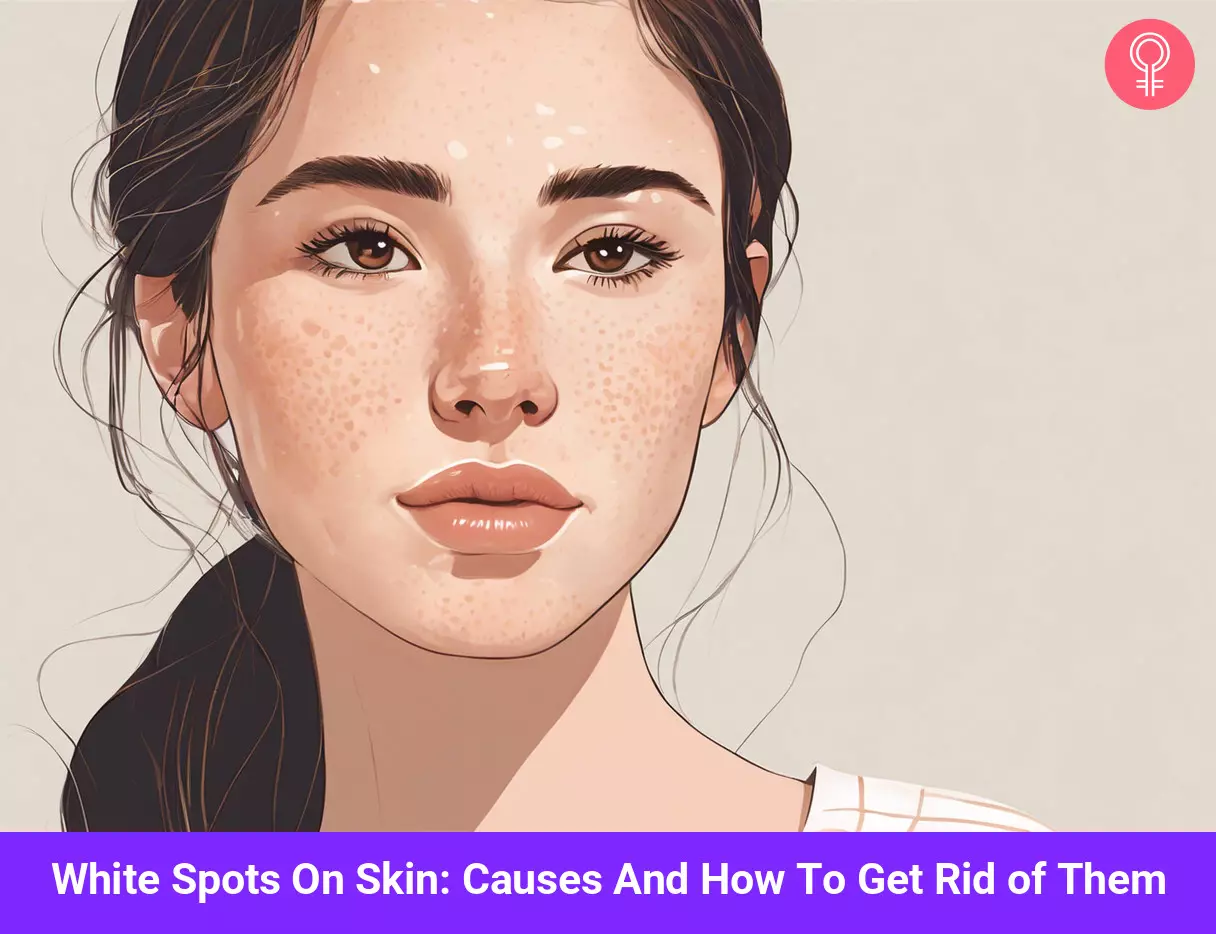
Image: Stable Diffusion/StyleCraze Design Team
Discover the various causes behind white spots, from skin conditions to sun damage. Watch now to uncover the truth and gain a deeper understanding
Personal Experience: Source
StyleCraze's articles are interwoven with authentic personal narratives that provide depth and resonance to our content. Below are the sources of the personal accounts referenced in this article.
i. My Vitiligo Diagnosishttps://www.youtube.com/watch?v=Di17hF2oTKs
References
Articles on StyleCraze are backed by verified information from peer-reviewed and academic research papers, reputed organizations, research institutions, and medical associations to ensure accuracy and relevance. Read our editorial policy to learn more.
- Idiopathic Guttate Hypomelanosis
https://www.ncbi.nlm.nih.gov/books/NBK482182/ - Tinea Versicolor
https://www.ncbi.nlm.nih.gov/books/NBK482500/ - Vitiligo
https://www.niams.nih.gov/health-topics/vitiligo - Tuberous Sclerosis Complex
https://www.ncbi.nlm.nih.gov/books/NBK1220/ - Lichen sclerosus
https://pubmed.ncbi.nlm.nih.gov/10348006/ - Eczema
https://www.ncbi.nlm.nih.gov/books/NBK538209/ - Association of Shiny White Blotches and Strands With Nonpigmented Basal Cell Carcinoma
https://pmc.ncbi.nlm.nih.gov/articles/PMC5037958/ - The Protective Role of Melanin Against UV Damage in Human Skin
https://www.ncbi.nlm.nih.gov/pmc/articles/PMC2671032/ - Vitiligo
https://medlineplus.gov/genetics/condition/vitiligo/ - TOPICAL TREATMENT OF MELASMA
https://www.ncbi.nlm.nih.gov/pmc/articles/PMC2807702/ - Skin Resurfacing Dermabrasion
https://www.ncbi.nlm.nih.gov/books/NBK558955/ - Intense Pulsed Light (IPL) Therapy
https://www.ncbi.nlm.nih.gov/books/NBK580525/ - Current Laser Resurfacing Technologies: A Review that Delves Beneath the Surface
https://pmc.ncbi.nlm.nih.gov/articles/PMC3580982/ - Antifungal Treatment for Pityriasis Versicolor
https://www.ncbi.nlm.nih.gov/pmc/articles/PMC5770013/ - The efficacy of low-dose oral corticosteroids in the treatment of vitiligo patients
https://pubmed.ncbi.nlm.nih.gov/10440289/ - Topical immunomodulators are effective for treatment of vitiligo
https://pubmed.ncbi.nlm.nih.gov/18789070/ - What Is New in Narrow-Band Ultraviolet-B Therapy for Vitiligo?
https://www.ncbi.nlm.nih.gov/labs/pmc/articles/PMC6536079/ - Herbal Compounds for the Treatment of Vitiligo: A Review
https://www.ncbi.nlm.nih.gov/pmc/articles/PMC5816300/ - Vitiligo hypothyroidism and cardiomyopathy
https://www.ncbi.nlm.nih.gov/pmc/articles/PMC3354864/
Read full bio of Dr. Divya Sharma
- Dr. Nadir Qazi, DO, has over 6 years of experience in cosmetic dermatology and plastic surgery. He is a member of the American Academy of Cosmetic Surgery and an instructor for advanced injections and laser techniques. He is well-known among celebrities and elite models for his promising liposuction results and his innovative facial contouring technique known as the HD Lift™.
 Dr. Nadir Qazi, DO, has over 6 years of experience in cosmetic dermatology and plastic surgery. He is a member of the American Academy of Cosmetic Surgery and an instructor for advanced injections and laser techniques. He is well-known among celebrities and elite models for his promising liposuction results and his innovative facial contouring technique known as the HD Lift™.
Dr. Nadir Qazi, DO, has over 6 years of experience in cosmetic dermatology and plastic surgery. He is a member of the American Academy of Cosmetic Surgery and an instructor for advanced injections and laser techniques. He is well-known among celebrities and elite models for his promising liposuction results and his innovative facial contouring technique known as the HD Lift™.
Read full bio of Arshiya Syeda
Read full bio of Ramona Sinha
Read full bio of Swathi E






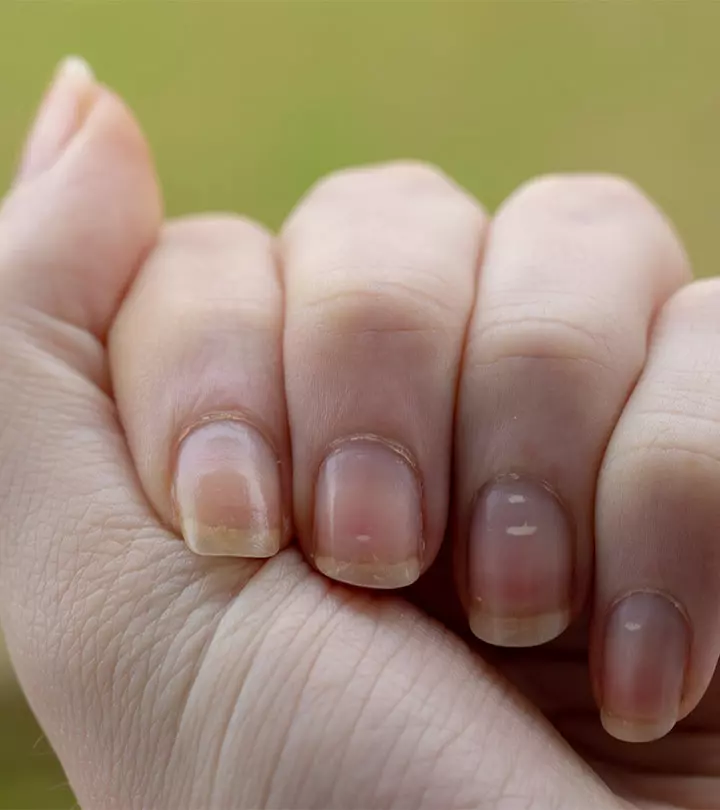
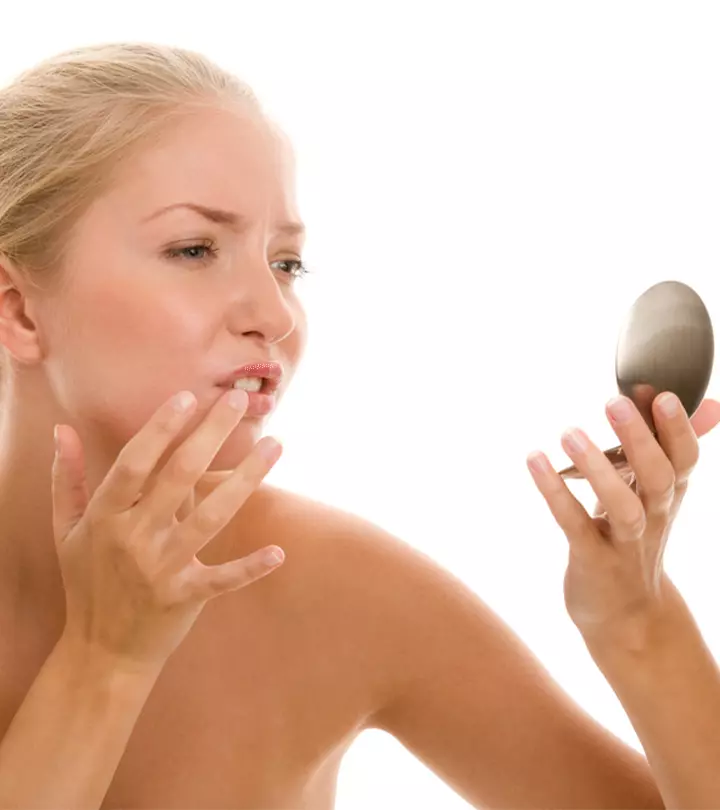
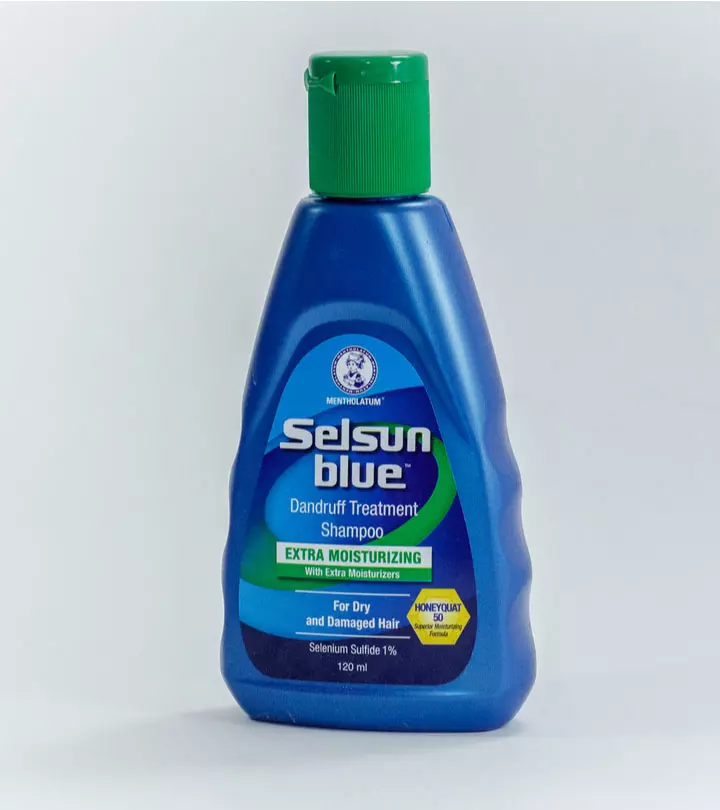
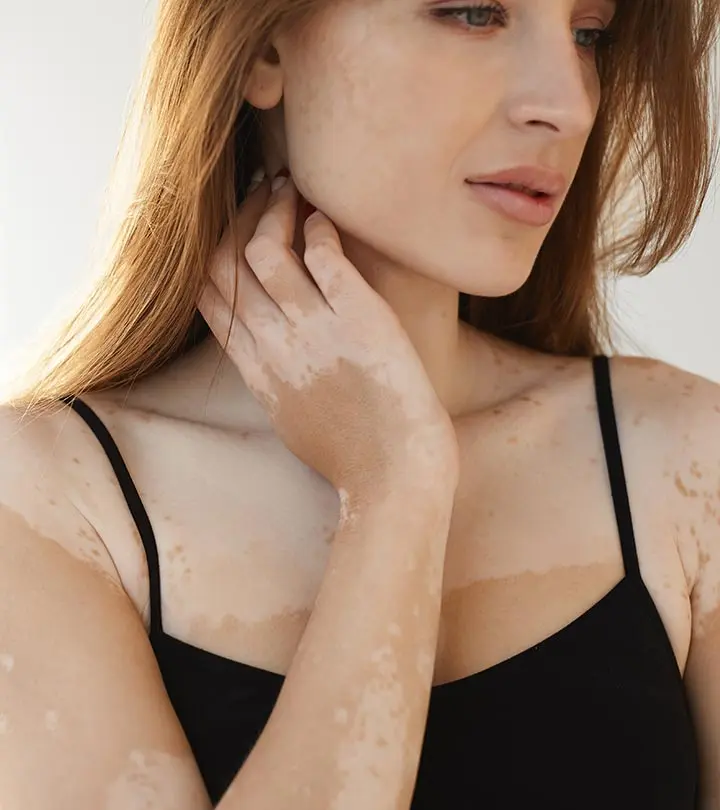

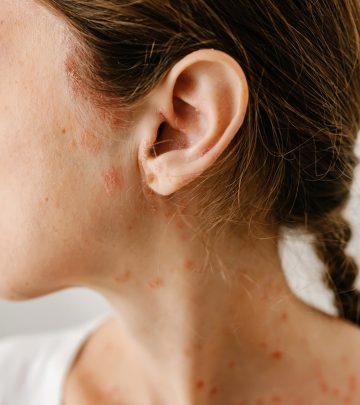

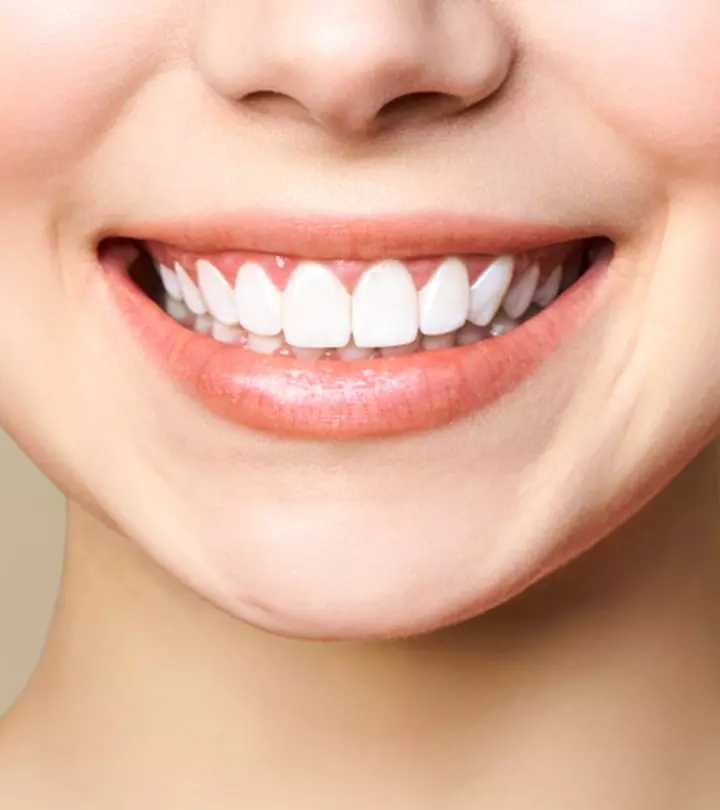

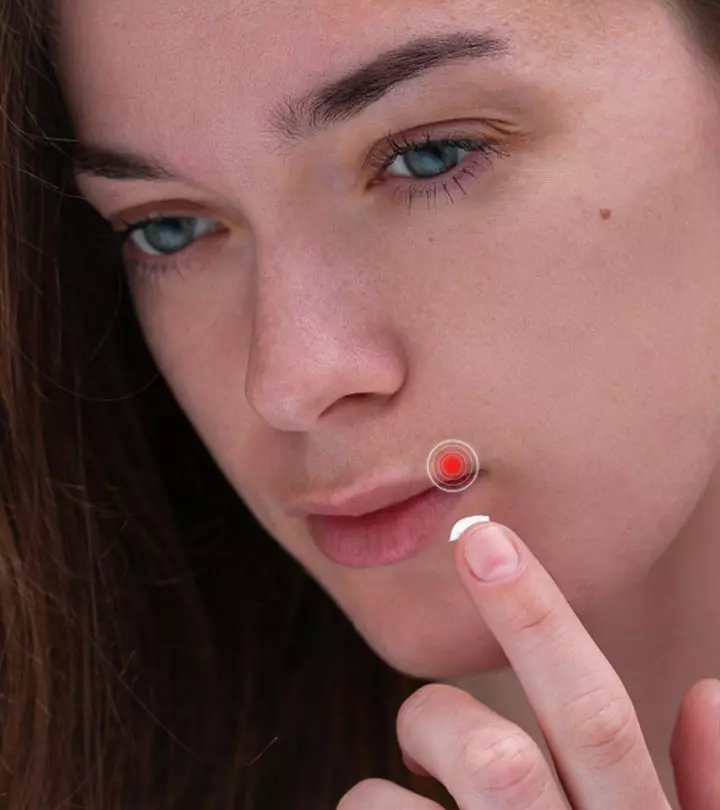


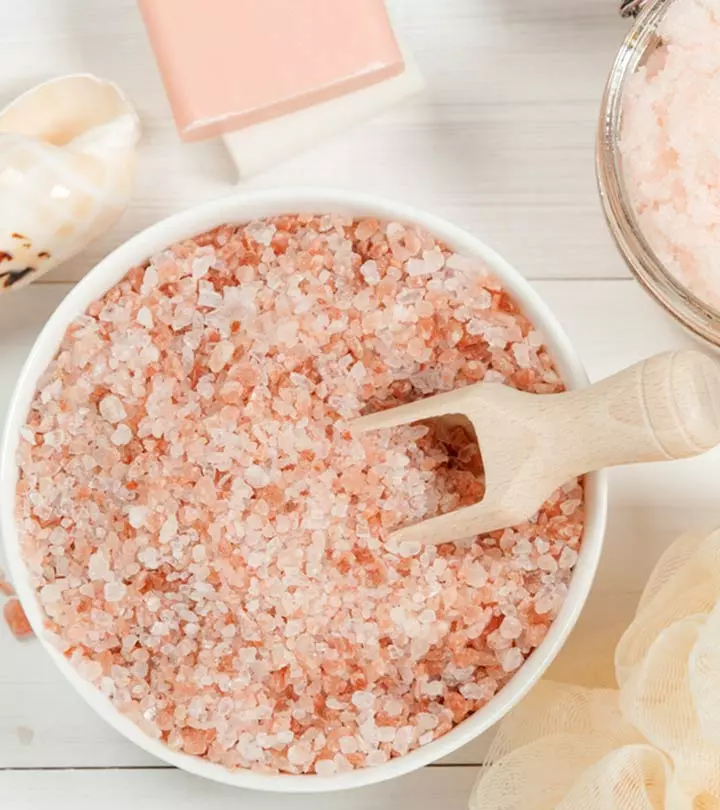
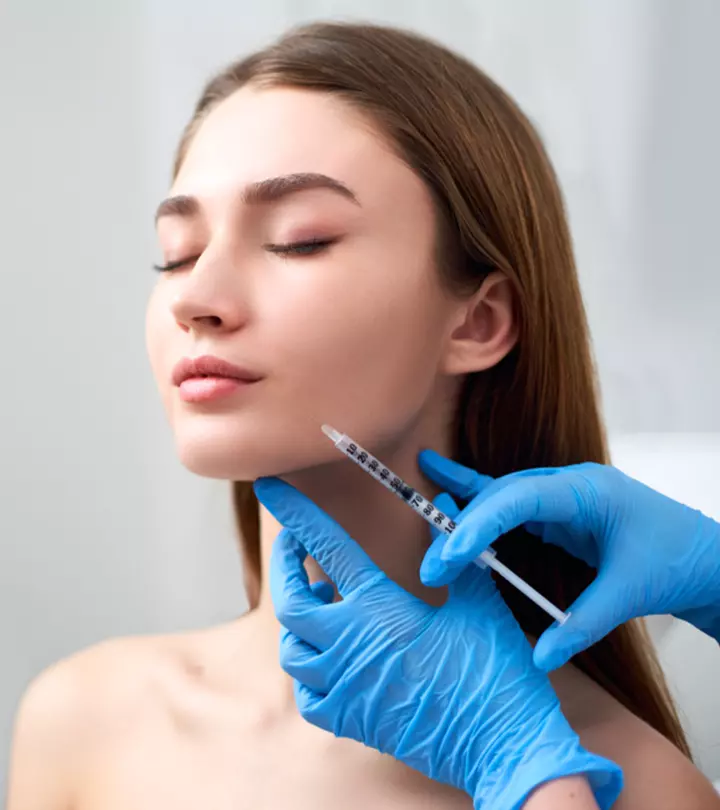

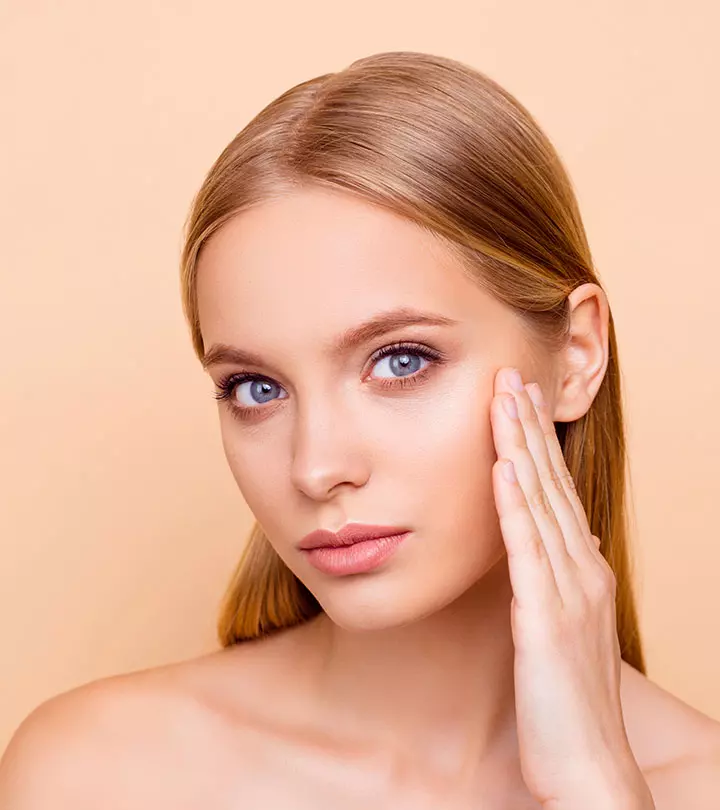
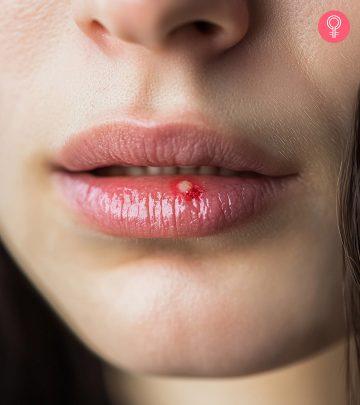
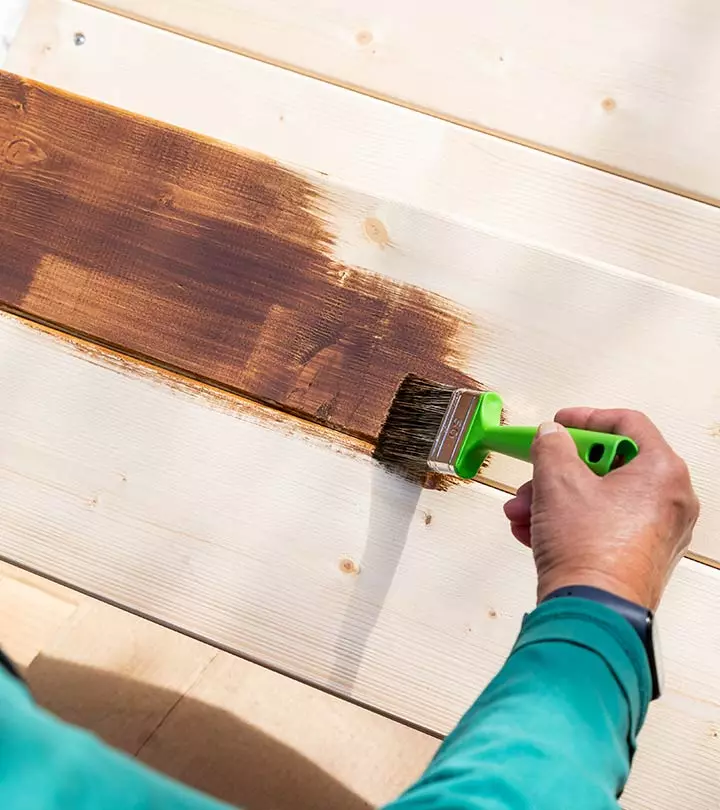
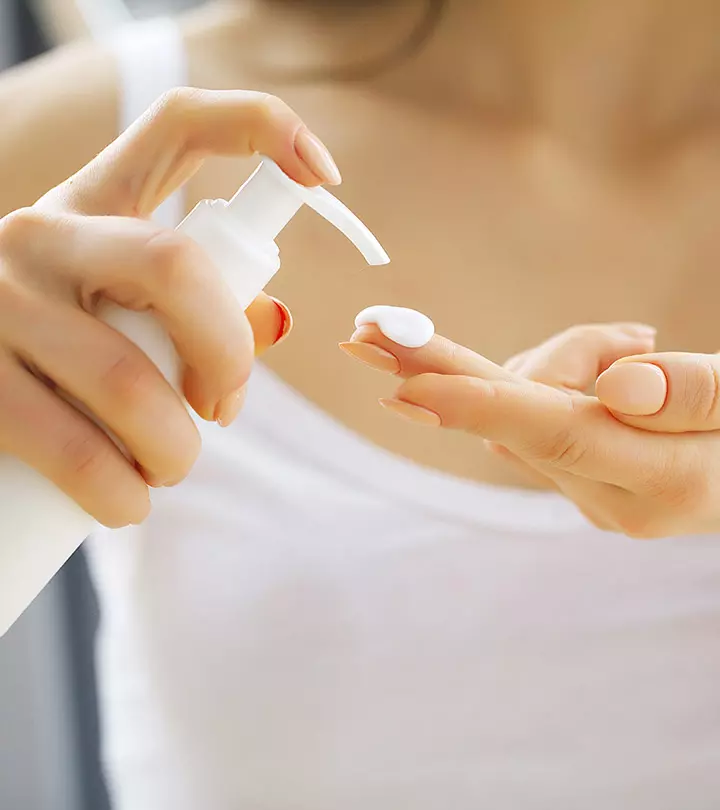

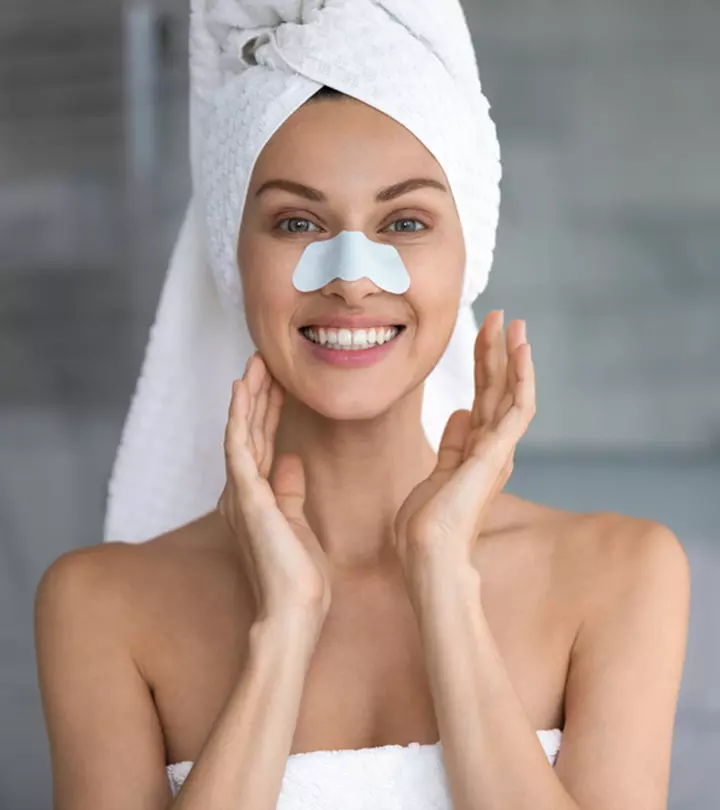
Community Experiences
Join the conversation and become a part of our empowering community! Share your stories, experiences, and insights to connect with other beauty, lifestyle, and health enthusiasts.